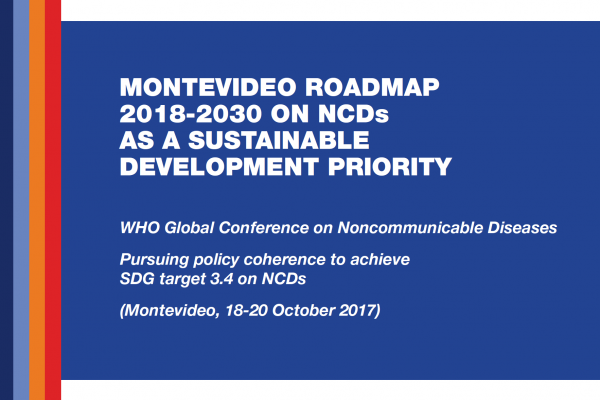70% of global deaths are attributable to noncommunicable diseases (NCDs)
NCDs are diseases which are not transmissible from person to person
Each year, 15 million people aged 30-69 die from a NCD
86% of premature NCD deaths occur in low and middle income countries (LMICs)
Most NCDs are preventable
Historically considered to be diseases of the rich and elderly, NCDs are now severely impacting on people in low- and middle-income countries (LMICs). Four out of five people with an NCD live in a LMIC.
Driven largely by four main modifiable risk factors – tobacco use, unhealthy diet, physical inactivity, and harmful use of alcohol – NCDs are a major cause of poverty and a barrier to economic and social development.
Many NCDs are preventable and premature - claiming health and lives, with the global burden of NCDs expected to increase by 17% by 2025.
With the largest NCD burden occurring in LMICs and leading to and perpetuating poverty, the prevention and control of NCDs is an urgent development issue. The costs to individuals and society of healthcare and loss of income-earners hampers poverty reduction and sustainable development. NCDs constrain the bottom billion in chronic poverty.
Political prioritisation of NCDs
Since 2010, NCDs have been elevated onto national and global health and development agendas. Through a series of political commitments – including the landmark 2011 UN Political Declaration on NCD Prevention and Control, the 2025 global NCD targets, the WHO Global NCD Action Plan 2013-2020, and integration into 2015 Sustainable Development Goals: Transforming our world: the 2030 Agenda for Sustainable Development adopted at the 70th UN Global Assembly in September 2015 prioritises health as a central factor in promoting and achieving sustainable social, economic and environmental development.
The world now has a truly global agenda for prevention and control of NCDs, with shared responsibilities for all countries based on concrete targets.
The 3rd Financing for Development conference (FfD3) in July 2015 paved the way for the positioning of health squarely on the development agenda, with DOHA Declaration and Monterrey Consensus, the Addis Ababa Action Agenda is intended to be taken as a policy framework that speaks to how countries will mobilise resources to implement the Post-2015 Development Agenda.
Civil Society
Within all major political commitments on NCDs, the important role of community support and civil society organisations (CSOs) is reinforced. Through their close connections with communities, CSOs provide a voice for people affected by NCDs in the processes of policymaking, decision-making and service delivery. CSOs engage with and apply concerted pressure on governments, to ensure resources and services are reaching and benefiting the affected communities.
They can bring about positive change to policies, practices and service delivery in areas that impact on the quality of people’s lives and wellbeing. CSOs also hold governments and other service providers to account to make sure that they fulfil their duties and deliver their promises.
There are also a number of underlying determinants of NCDs, also called "the causes of the causes". These are a reflection of the major forces driving social, economic and cultural change – globalisation, urbanisation, and population ageing.
With the political political prioritisation of NCDs and unprecedented civil society commitment, this is a time when we can be more optimistic about the future of prevention and control of NCDs, than perhaps at any stage in recent history.


